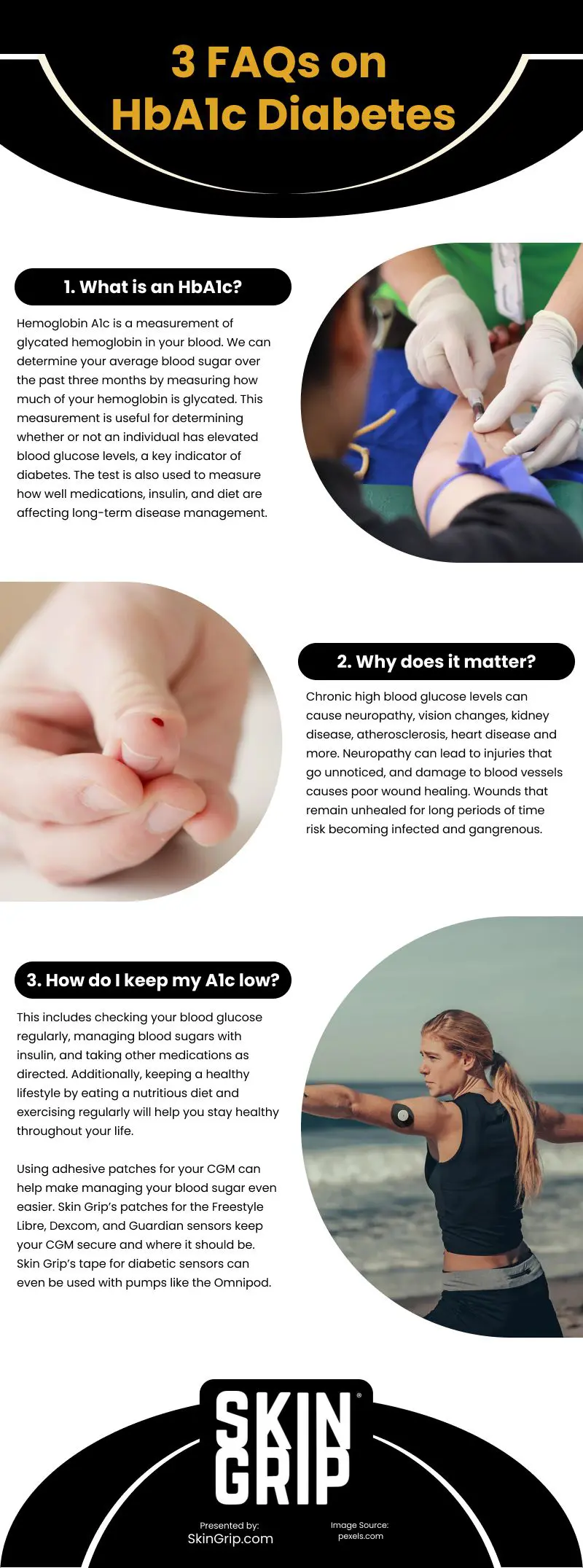
Diabetes is a chronic disease that affects millions of people worldwide. It is characterized by high levels of glucose in the blood, which can lead to serious health complications if not properly managed. One of the key indicators of glucose control in people with diabetes is the HbA1c test. In this infographic, we will take a closer look at HbA1c and how it relates to diabetes.
What is HbA1c?
HbA1c, also known as hemoglobin A1c, is a type of hemoglobin that is found in red blood cells. It is formed when glucose binds to hemoglobin and is a measure of average blood sugar levels over the previous 2 to 3 months. This test is important for people with diabetes as it provides a snapshot of their glucose control over an extended period of time.
Why is HbA1c Important for People with Diabetes?
For people with diabetes, maintaining good glucose control is crucial to reducing the risk of serious health complications such as heart disease, nerve damage, kidney disease, and eye problems. The HbA1c test is an important tool for monitoring glucose control as it provides a more comprehensive picture of blood sugar levels over time compared to daily blood sugar readings. It measures the percentage of glycated hemoglobin, which is a form of hemoglobin (the red blood cell protein that carries oxygen) that has glucose molecules bound to it. The higher the level of glycated hemoglobin, the poorer a person’s blood sugar control has been over time.
How is HbA1c Used to Monitor Diabetes?
The HbA1c test is typically done two to four times a year and is used in conjunction with other glucose monitoring methods, such as daily self-monitoring of blood glucose (SMBG) and regular visits to a healthcare provider. Based on the HbA1c results, healthcare providers can make adjustments to treatment plans and help patients achieve better glucose control.
The main goal of diabetes management is to keep HbA1c levels as close to normal (less than 6.5%) as possible. People with diabetes should be aware of their target HbA1c level and how often they should have the test done. If people do not meet their HbA1c goal, modifications to the diet, exercise, medication regimen and/or other lifestyle factors may be necessary to better manage blood glucose levels.
What is a Healthy HbA1c Level?
The American Diabetes Association recommends that people with diabetes aim for an HbA1c level of less than 7%. This corresponds to an average blood glucose level of 154 mg/dL. However, individual target levels may vary based on factors such as age, health status, and treatment goals. In general, the higher the HbA1c level, the greater the risk for long-term complications. People who have had diabetes for a long time may benefit from lower targets in order to reduce their risk of these complications.
It’s important to remember that an HbA1c test is just one part of managing diabetes. Other factors, such as diet and exercise, also play an important role in maintaining a healthy glucose level. People with diabetes should work with their healthcare team to develop a plan that meets their individual needs and lifestyle.
How Can You Improve Your HbA1c Level?
There are several steps that people with diabetes can take to improve their HbA1c levels and achieve better glucose control. These include:
- Eating a healthy, balanced diet that is low in sugar and carbohydrates
- Engaging in regular physical activity, such as walking or exercising for 30 minutes a day
- Taking medications as prescribed and monitoring blood sugar levels regularly
- Managing stress and getting enough sleep
- Working closely with a healthcare provider to adjust treatment plans as needed.
Conclusion
HbA1c is an important tool for monitoring glucose control in people with diabetes. By understanding HbA1c and taking steps to improve glucose control, people with diabetes can reduce the risk of serious health complications and lead a healthier, more active life. By working closely with a healthcare provider and making lifestyle changes, anyone can achieve better glucose control and improve their HbA1c levels.
source: https://skingrip.com/blogs/t1d-tips/hba1c-diabetes-you
Comments
Download this infographic.
